If you've visited Japan you might have seen them tied to a child's backpack or dangling from a car's rear-view mirror. You might have seen them in anime. If you've been to a Shinto Shrine or Buddhist Temple you might have seen dozens of them, small bags in jewel colours lined up in rows, for sale. But what are these things? They are omamori, a Japanese folk tradition that is intertwined with Japan's two major religions, and still very visible today.
It's difficult to translate omamori お守り directly as they don't have a clear equivalent in the English speaking world. You can think of them as portable personal protection amulets or charms. Mamori 守り means protect, and the お is a honourable prefix. They are a little like the Japanese equivalent of a lucky rabbit's foot or a four leaf clover. Unlike those though, omamori also come not only in general "lucky" versions, but in a whole range of specific forms, from "cooking skill improvement" to "job hunting".
- Shinto, Buddhism and Omamori
- Types of Omamori
- Modern Omamori
- How do I Choose an Omamori?
- Omamori Buyer's Guide
- Unusual Omomori
- What to Do with an Omamori
- How to Dispose of an Omamori
- Omamori as Souvenirs
Shinto, Buddhism and Omamori
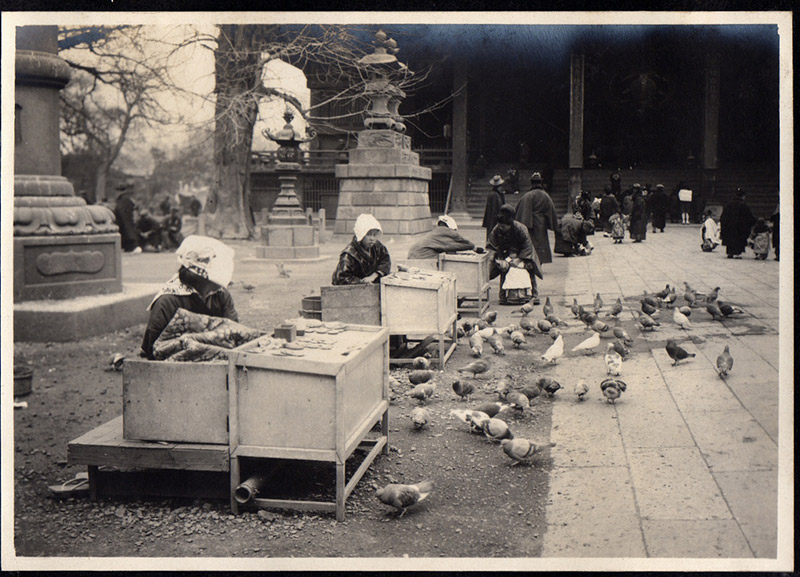
The connection between omamori, Shinto and Buddhism is quite complicated – whoooo syncretism! The two religions overlapped and intermingled in Japan until they were separated legally in 1868. Omamori came out of a fusion of Buddhist amulet tradition, such as ones that are still popular in Thailand today, and Shinto charms, such as ofuda. Omamori in their current form became popular during the Tokugawa period in the 17th century. Today omamori can be bought at both Shinto shrines and Buddhist temples. Omamori can act as a physical prayer for a mini-miracle as well as being an offering to a shrine or temple. The sale of omamori helps support shrines and temples.
In Shinto, the power of the omamori comes from the enshrined kami, goshintai 御神体. Buddhist omamori draw their power from a gohonzon 御本尊 (Buddhist image). Also, for a shrine or temple's omamori to be popular, it should have an engi 縁起 or story of a numinous or miraculous occurrence at or near the site. For example, Sensei Temple in Asakusa, which claims to sell the most omamori in Japan each year, has an engi about a golden dragon who came out of the sea to bask in the sun at the site of the temple. I don't know about you, but that makes me want to get an omamori there!
There is another component to the power of an omamori. That's you! You can't just buy an omamori and expect all of your problems to be solved. They serve to encourage and support you in your efforts. Indeed, there is one sect of Buddhism, Jōdo Shinshū, which doesn't use omamori because you are supposed to give your fate and devotion entirely to Amida, while omamori expect you to contribute something to your own wellbeing.
Types of Omamori
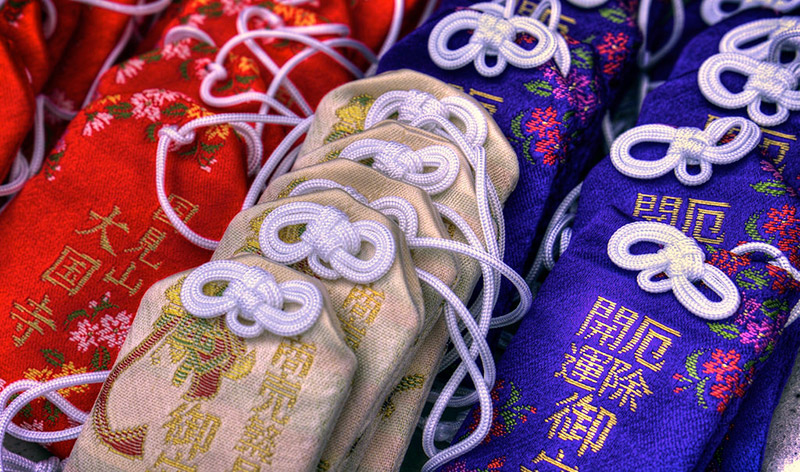
There are two main types of omamori. The first are talismans, which are rectangular and the most popular kind of omamori. These gain their power from words written on paper or wood. The words could be the name of the shrine, or a section from a sutra, or some other powerful words. The wood or paper is then sealed inside a cloth bag.
An important note: never open the cloth to see what is inside! It is disrespectful and the omamori will lose its power. Omamori draw some of their power from the concept of the power of enclosed places. The covering of the omamori encloses the sacred words and so puts them in a separate realm where they can be effective, much as Shinto shrines are set within a separate space marked by torii gates.
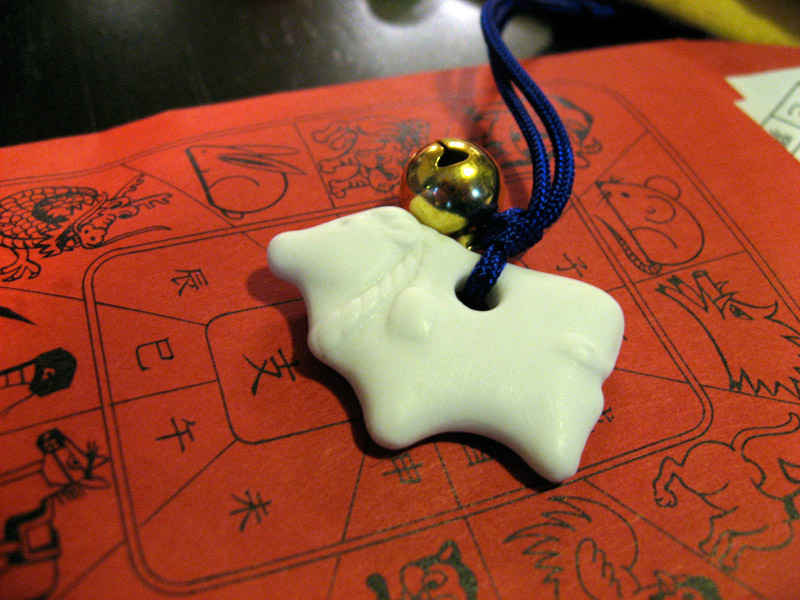
The second type are the morphic omamori. This means they are made in the shape of something. The traditional forms are the bottle gourd, the bell, and the mallet. Of these, the bottle gourd may be the oldest, appearing in many ancient folk tales as a symbol of health, vitality, and immortality. Each has ceremonial links to objects used in Shinto practices. Some shrines have very famous orphic omamori, such as the fox omamori at Inari shrines. Another common kind of morphic omamori are zodiac animals.
Modern Omamori
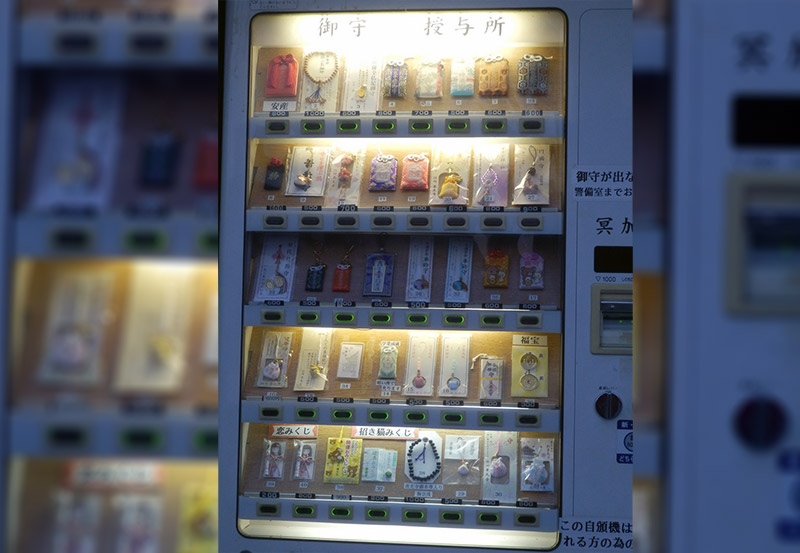
Though their origins lie far back in Japan's folk traditions, omamori are very much a part of modern Japanese culture. There's even an omamori vending machine at Zenkoji Temple, Nagano. You can also find many omamori with cute characters on them. Some of these aren't sold at shrines or temples, but just regular souvenir shops. Some Shinto and Buddhist organisations disapprove of this dilution of omamori. Others happily sell character omamori. My local shrine sells Rilakkuma omamori alongside the more traditional ones. You could even see the popularity of phone straps in Japan as a non-religious extension of omamori culture.
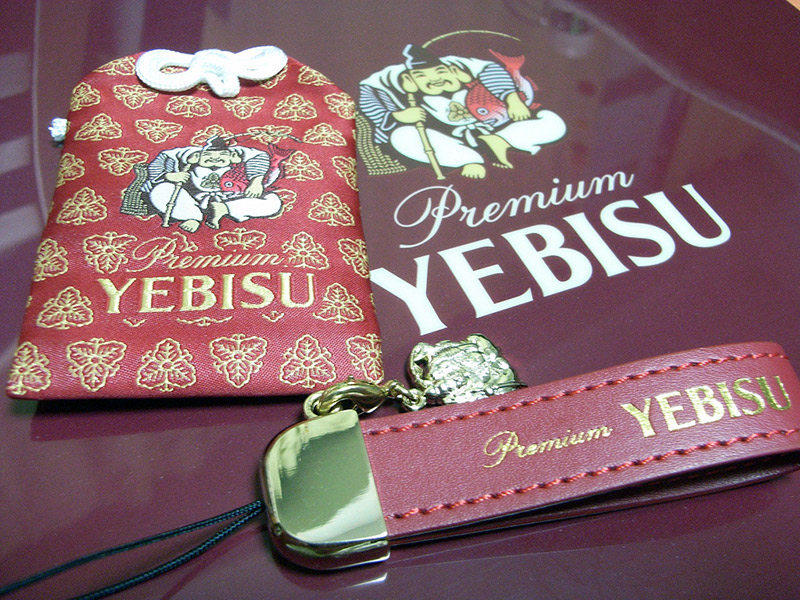
In the past, making omamori was a duty of the laywomen of the parish or Miko, the shrine maidens. These days most omamori are made in factories in Tokyo, Osaka or China, though they are still blessed by priests. However, some shrines continue to make their own omamori on site, such as Koganji Temple in Tokyo and the Grand Shrine at Ise.
How do I Choose an Omamori?
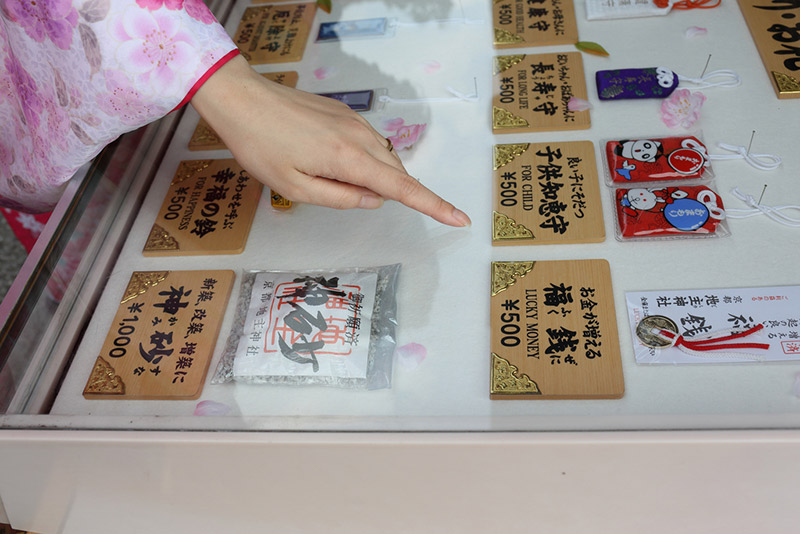
With such a wide variety of omamori available, selecting the right omamori can be tricky. While some of the bigger shrines and temples will have descriptions in English, this is rare outside the big tourist hot spots. The first time I bought an omamori, I spent a long time looking at my local shrine's website to work out which one I should get.
Although both Shinto shrines and Buddhist temples have no problem with non-adherents buying their omamori, remember they are more than just a simple souvenir. Omamori should be treated with respect. Part of this respect is making sure you're not just picking the one you think is cutest, but choosing the one you need. Buying a childbirth omamori for your boyfriend, or a recovery from alcoholism omamori for your teetotaling great aunt is not very appropriate.
Omamori Buyer's Guide
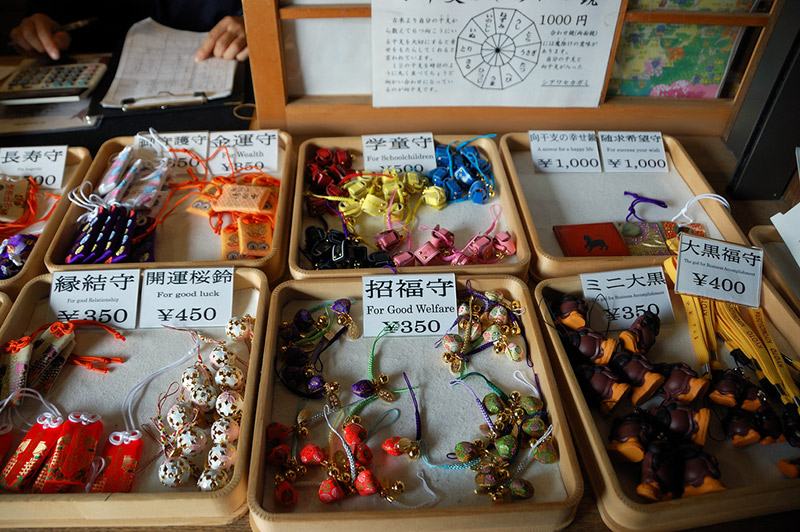
But worry not! I've put together this guide to sort your anzens from your anzans. Different shrines have different styles of omamori and there may be some variation in the kanji. However, if you tell the attendants what you are looking for they will be able to help you.
Happiness
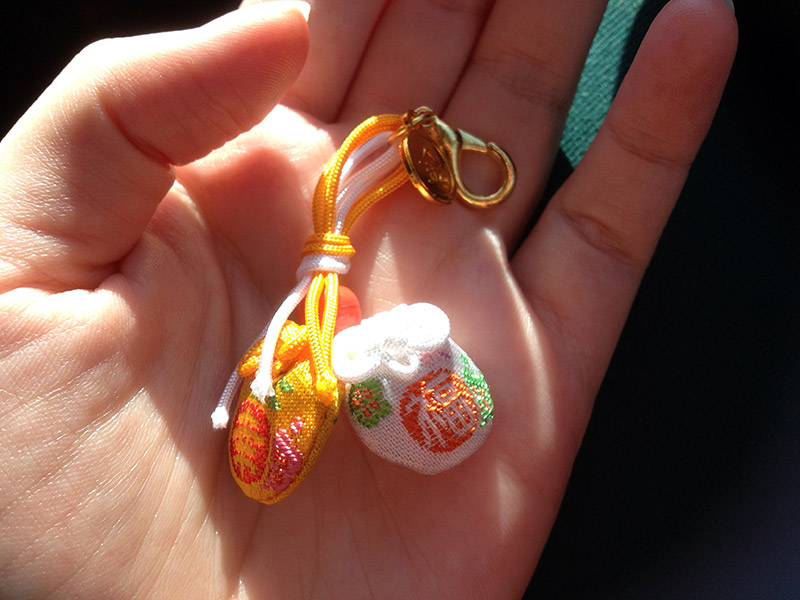
Japanese name: shiawase 幸せ
Let's start off with a very cheerful omamori. These are meant to help you achieve happiness in life. Yay happiness!
Traffic Safety
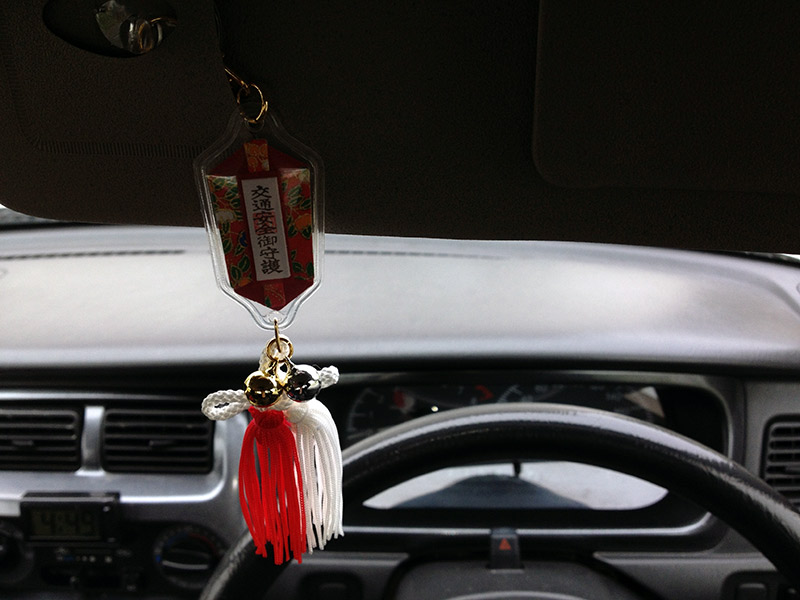
Japanese name: kōtsū anzen 交通安全
Originally to protect travellers, these are now the most popular type of omamori. They provide protection for drivers and vehicles. Recently traffic safety omamori stickers have become popular and are often sold in a set with a more traditional omamori. Makes a great gift for anyone who commutes a lot, or is a novice driver.
Romance
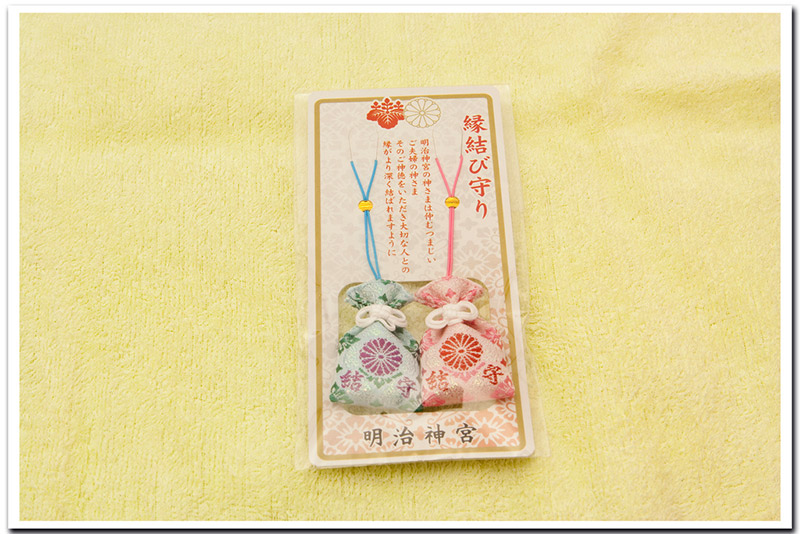
Japanese name: enmusubi 縁結び
There are two kinds of romance omamori. The first is for people seeking love. Get this omamori if you are longing for a partner. The second kind are for people in relationships who wish to stay together strongly. The way to tell these apart is that the first kind are usually sold singly, while the second kind are sold in pairs. Some shrines sell only one enmusubi omamori and the difference is simply whether you are buying one or two. A pair make a great gift for yourself and your significant other, or for newlyweds. Buying one is fine for yourself, but buying one as a gift for someone else could be a bit insulting, unless they asked you to pick one up for them.
Safe Childbirth
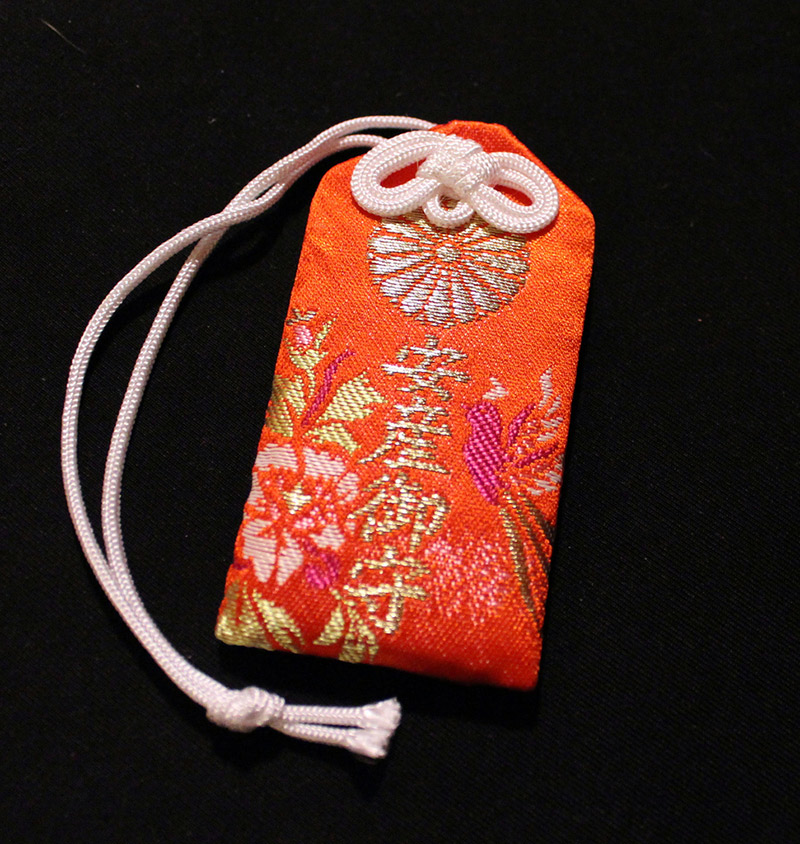
Japanese name: anzan 安産
This is for expectant mothers to have a safe and easy pregnancy and childbirth. If you know someone who is going to push another human being out of themselves soon (so hardcore), then you could get them one of these.
Avoidance of Evil
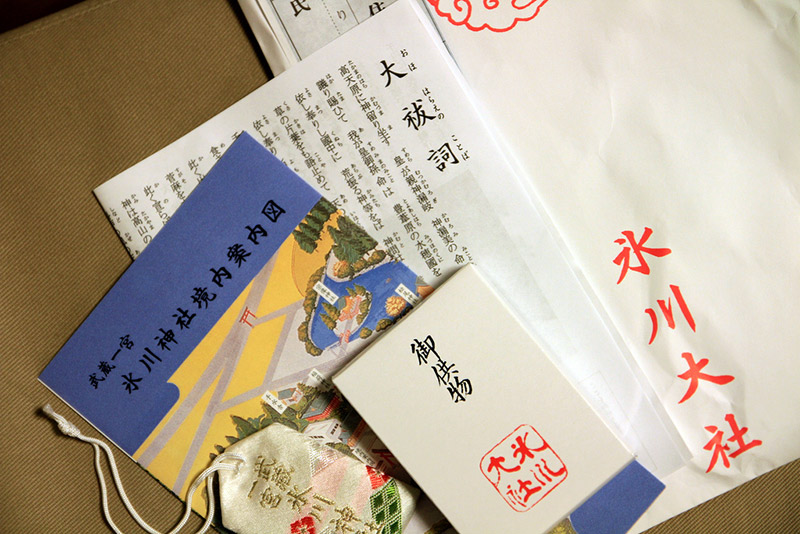
Japanese name: yakuyoke 厄除け
This and the kaiun (see below) are probably the closest thing to general good luck omamori. They approach things from slightly different angles. This wards off evil. Buying these for yourself and others is a good idea. Everyone likes avoiding evil!
Good Fortune
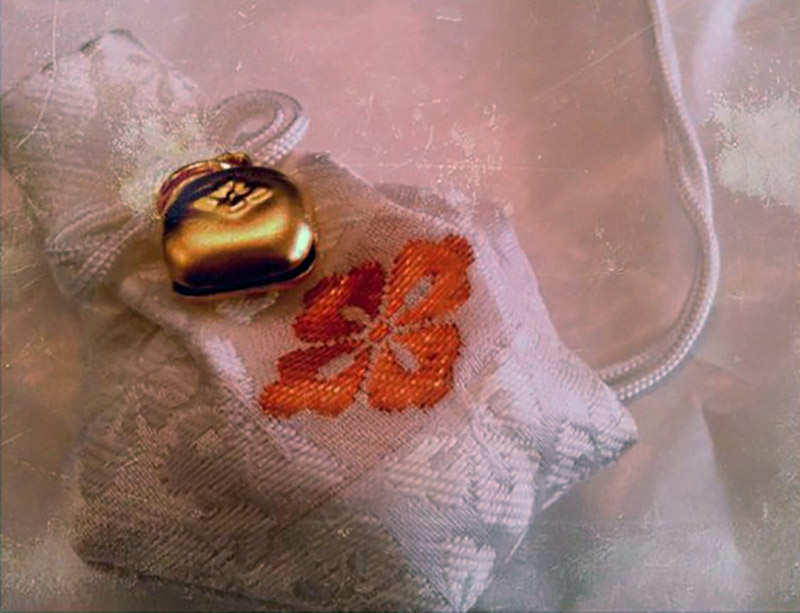
Japanese name: kaiun 開運
This is the more positive of the general good luck omamori and is probably the closest to a "lucky charm" of all the omamori. It draws luck to you. Again, it's suitable for everyone. Who doesn't like a little extra luck?
Education
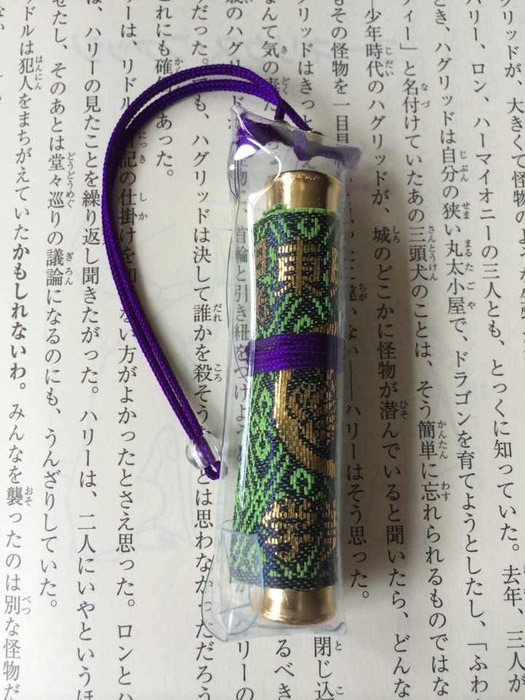
Japanese name: gakugyō-jōju 学業 成就
These are very popular omamori for students. They are meant to help both in studying and in passing examinations. I've often seen them tucked into student's pencil cases, or being clutched just before a big exam. Parents often buy them for their children. If someone you know is studying hard in school or university, this would be a great thing to give them.
Good Health
Japanese name: kenkō 健康
If omamori offer personal protection, then there can be few things more personal to protect than your health. These omamori are intended to be preventative and help keep you in good health.
Get Well Soon
Japanese name: byouki heyu 病気 平癒
While kenkō omamori (above) encourage you to stay healthy, the byouki heyu omamori are to help you recover from sickness. They would make an excellent get well soon gift.
Prosperity
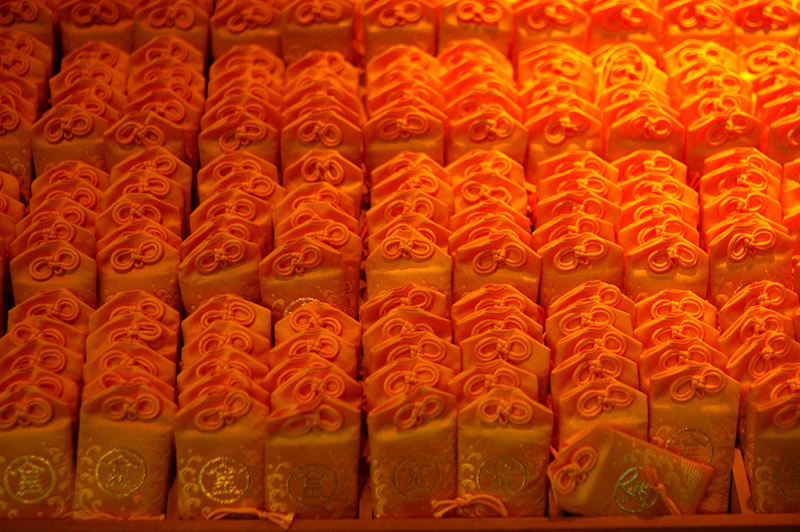
Japanese name: shōbai hanjō 商売繁盛
If you want your business venture to go well, or if you want to protect your financial affairs, then this is the omamori for you. Yellow is a colour associated with money, so look out for yellow omamori as well as owls, whose name (fukurō) sounds like the Japanese word for good fortune fuku 福.
Those are the most common types of omamori. They are the ones you're most likely to find at most shrines and temples. However, shrines are also responsive to the needs of local inhabitants. My local shrine has an omamori dedicated to fishing boat safety because my town is a fishing port. Some shrines, such as Aso Shrine in Kyushu, take surveys of locals asking about their concerns. If enough people have a problem, then an omamori will be produced to act on it. There are some shrines that sell over 70 different types, each dealing with a different problem. For example, the Konpira Shrine in Shikoku offers 77 kinds of omamori, ranging from winning elections to water purification. The world of omamori is vast and varied!
Unusual Omomori
Here are a few of the more unusual ones. You could find some of these at many different places across Japan, while others are found at only one shrine.
Digital Security
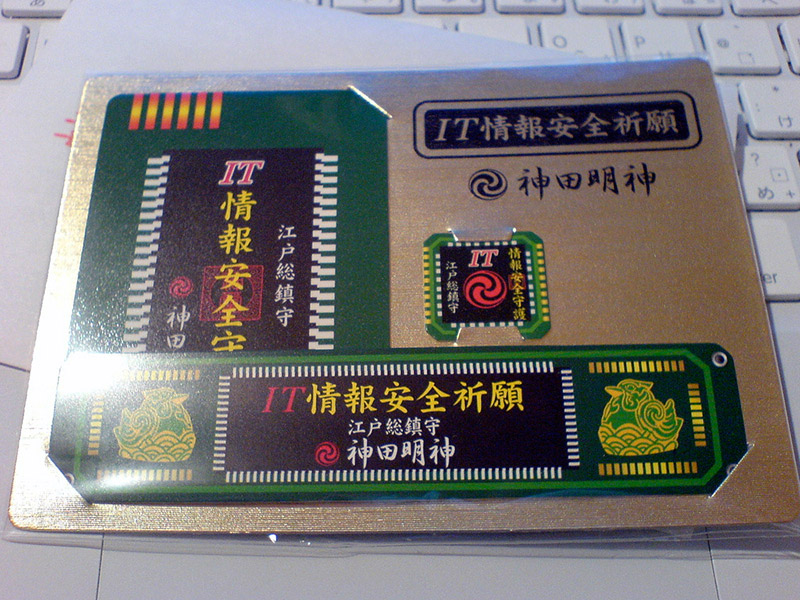
Japanese name: jōhō anzen kigan 情報安全祈願
This omamori comes in the form of a blessed memory card. It helps you protect your digital information and keeps your technology working smoothly, proving that omamori are a living Japanese tradition, not just ancient superstition. It can be found at Denden-gu, a shrine to the spirit of telecommunications in Kyoto
Safety from Bears

Japanese name: kumajo 熊除
If you like hiking and want a little divine protection from Japan's bears to go along with your other precautions, then you could get an omamori to protect you from them.
Pet Safety

Japanese name: Pet Omamori ペットお 守り
Humans aren't the only ones who need a little help now and then. You can pick up an omamori to protect your furry, fluffy, feathery and scaly friends too.
Other unusual omamori include:
- Angling success omamori
- Heavy machinery safety omamori
- A "scapegoat" omamori
- The spool of happiness
- Performing arts omamori
- And many, many more
What to Do with an Omamori
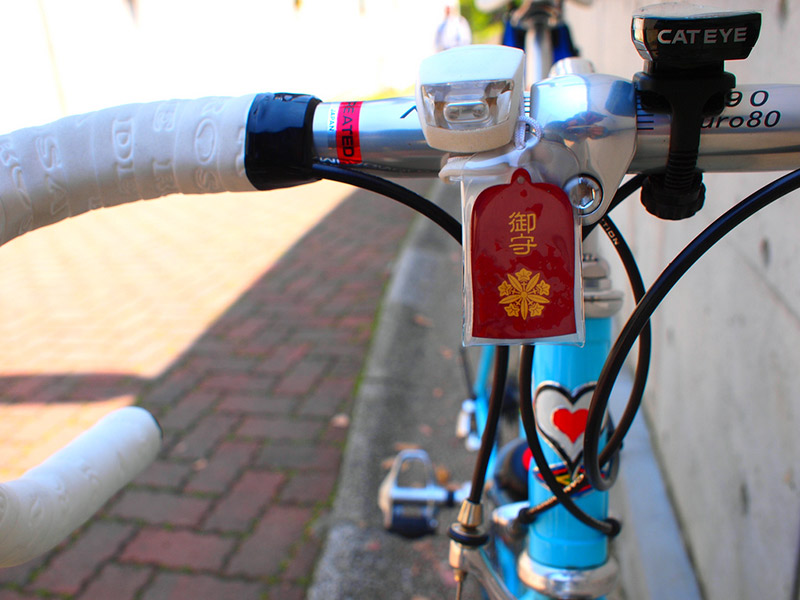
So you've bought your omamori. Now, what to do with it? The important thing about omamori is that they are personal and portable. So for it to work best, you should attach it to something appropriate.
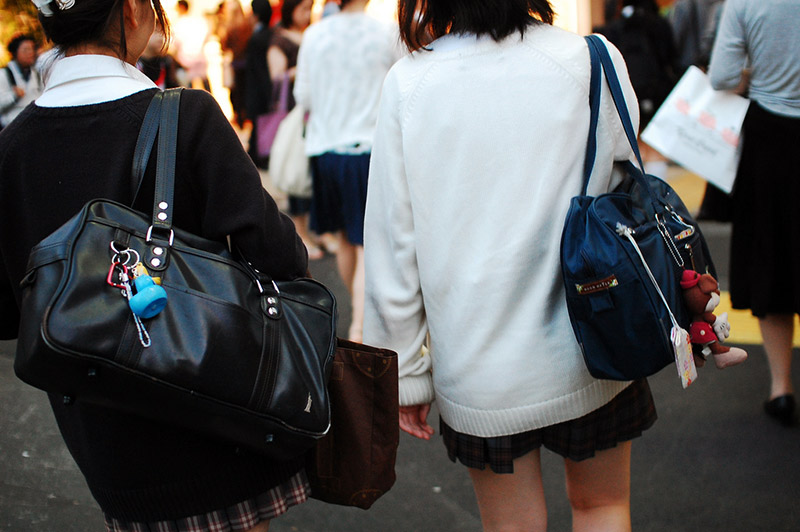
For example, traffic safety omamori are often seen dangling from the rear view mirror, or attached to car keys. Form and function go together harmoniously in most omamori. Those intended to be attached to things have the appropriate attachment (for example a traffic safety omamori might have a key ring attachment or a suction cup so you can stick it to your windscreen.) Card type omamori are sized to be tucked into your wallet. They tend to be ones associated with wealth and business, so a wallet seems like a good place for them.
Another common sight is a safety omamori attached to a child's backpack to protect them on the walk to school. A student might keep a study omamori in a pencil case, or hold it in their pocket during an exam .
Carry your omamori however feels right for you. As with many aspects of Shinto practice, many Japanese people often do not consider too deeply why they believe in the power of omamori. "Omamori work because omamori work" is about as much explanation as you are likely to get. The elusive nature of Shinto makes it at once fascinating and frustrating to try to understand.
How to Dispose of an Omamori

Omamori have a limited lifespan. They are usually considered only effective for one year, or until they become damaged. If something bad happened to the omamori, it breaks or gets destroyed, then it's doing its job. Especially with migawari omamori 身代わり お守り, which acts as a "scapegoat", the thinking goes that the bad things happen to the omamori and not to you. Omamori should be replaced every year because otherwise they will absorb too much bad luck or run out of spiritual power. This ties in with Shinto beliefs about the importance of renewal. For a religion that tears down and rebuilds its most important shrine every 20 years, replacing a little omamori every year doesn't seem like such an inconvenience.
You shouldn't just chuck it in the trash. That's considered disrespectful. Instead, you should take it back to a Shinto shrine, ideally the same one you bought it from. At larger shrines, especially at busy times like New Year, there might even be a disposal box or an omamori conveyor belt to take your used charm to be ritually purified and burned in a ceremony. Otherwise, just return the omamori to a shrine or temple attendant. They'll know what to do. You can pick up a new omamori while you're there.
If you don't live in Japan, all this can seem rather daunting. Popping down to a shrine isn't that easy. There is a Shinto shrine in America that will dispose of your omamori properly if you mail it to them. However, don't get too worried about omamori disposal. Plenty of Japanese people keep them for longer than a year. One of my high school students still has the study omamori his mother gave him on his first day of elementary school. Some are even passed down in families. So if you want to keep your omamori, go ahead.
Omamori as Souvenirs

You don't have to feel shy about buying an omamori. The shrine or temple attendants will likely be happy that you are interested in them. They don't carry a heavy weight of religious demand. By buying one, you aren't declaring your allegiance to Shinto or Buddhism to the exclusion of any other religion. Unlike many religions, both modern Shinto and Buddhism in Japan are generally comfortable with other religious practitioners participating, just as they coexist alongside each other, often sharing the same grounds.
Omamori feed the human need to look beyond ourselves for solutions to our difficulties, while still encouraging us to do our best. They are more like a booster than a total solution. When things are tough, it feels good to hold an omamori in your hand and hope for things to get better.
As such, omamori make great souvenirs. Japanese people also usually buy omamori as gifts. An omamori is a beautiful piece of Japanese culture, but it also expresses your wishes for the wellbeing of the person you give it to. What better souvenir of your trip to Japan could there be?
